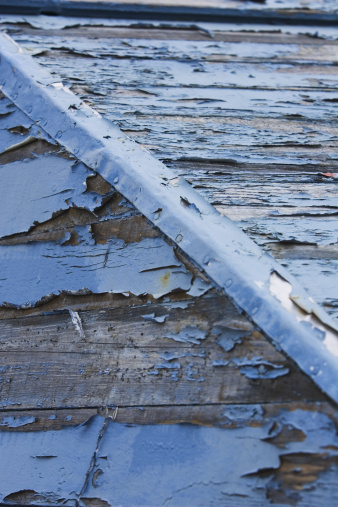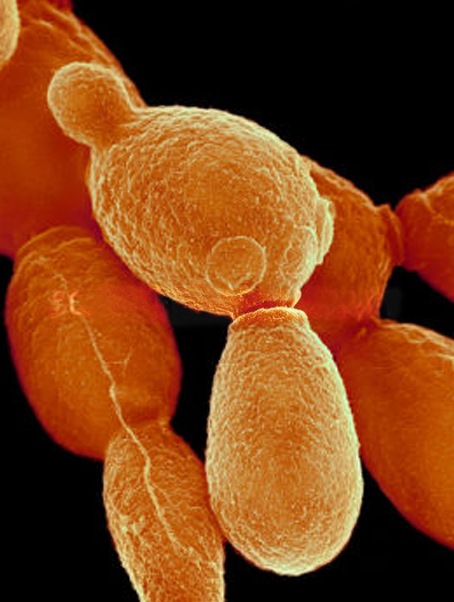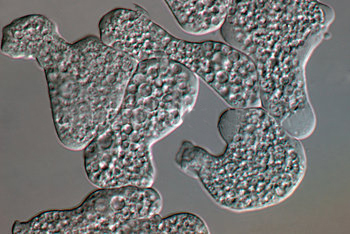Sponges are a unique animal with primitive characteristics. For example, most animals only reproduce sexually. There are only a few exceptions to this rule in the animal kingdom, and one of them is sponges. Sponges are able to reproduce both asexually and sexually. What other animal that you have learned about can reproduce asexually? Think about the answer, then click "Show Me" to see if you are correct.

Trichoplax adhaerens of placozoa Phylum reproduce asexually.
In the activity below, click each tab to read about the three modes of asexual reproduction in sponges.
Shedding
Budding
Gemmule Formation
 A remarkable attribute of sponges is their ability to regrow an entire copy of their body from a tiny piece that has been separated from the original body. This describes one type of asexual reproduction in sponges called shedding. Shedding is the process in which sponges can slough off small pieces of their bodies that then grow into adult sponges. Shedding can be compared to paint chipping off, like what's happening in the picture.
A remarkable attribute of sponges is their ability to regrow an entire copy of their body from a tiny piece that has been separated from the original body. This describes one type of asexual reproduction in sponges called shedding. Shedding is the process in which sponges can slough off small pieces of their bodies that then grow into adult sponges. Shedding can be compared to paint chipping off, like what's happening in the picture.
 Poriferans, as well as Placozoans, are capable of reproducing asexually through budding. The sponge has an outgrowth that grows until it's big enough to separate from the parent sponge. Pictured is budding in yeast cells; the growing bud is almost as big as the parent cell and will soon separate. If this were a sponge, once detached, the young sponge would attach itself to a hard surface to live out its life.
Poriferans, as well as Placozoans, are capable of reproducing asexually through budding. The sponge has an outgrowth that grows until it's big enough to separate from the parent sponge. Pictured is budding in yeast cells; the growing bud is almost as big as the parent cell and will soon separate. If this were a sponge, once detached, the young sponge would attach itself to a hard surface to live out its life.
 Some fresh-water sponges are able to form gemmules, which are clusters of amoebocytes covered in a protective coating. These sponges form gemmules when the living conditions become harsh, such as cold temperatures, dryness, or lack of food. The gemmule remains protected even if the rest of the sponge dies. When environmental conditions improve, the gemmule grows into a new sponge. Pictured is a cluster of amoebas. How is this not quite a gemmule? Think about the answer, then click "Show Me" to see if you are correct.
Some fresh-water sponges are able to form gemmules, which are clusters of amoebocytes covered in a protective coating. These sponges form gemmules when the living conditions become harsh, such as cold temperatures, dryness, or lack of food. The gemmule remains protected even if the rest of the sponge dies. When environmental conditions improve, the gemmule grows into a new sponge. Pictured is a cluster of amoebas. How is this not quite a gemmule? Think about the answer, then click "Show Me" to see if you are correct.

Gemmules are a cluster of amoebocytes, not amoebas. An amoeba is a unicellular organism in kingdom Protista. An amoebocyte is a type of cell located in a sponge. The amoebocytes resemble amoebas.
What are the three methods of asexual reproduction in sponges? Think about the answer, then click "Show Me" to see if you are correct.

Sponges can reproduce asexually by shedding, budding, or gemmule formation.
Jot down an answer to each of these questions--or say the answer to yourself--before clicking the question to check your understanding of asexual reproduction in sponges.
| What is shedding? | a type of asexual reproduction in sponges in which a thin layer is sloughed off and eventually grows into a copy of the parent sponge |
| What is budding? | a mode of asexual reproduction in which an outgrowth eventually disconnects from the parent sponge to grow into an exact copy of the parent sponge |
| What is gemmule formation? | a type of asexual reproduction in freshwater sponges that occurs in times of severe conditions in which a cluster of amoebocytes are protected until conditions improve; the gemmule then grows into an adult sponge |
